 Whether it be high performance sports at the Olympics or the development of sports locally, sports education is becoming increasingly important in the modern world. Even though there is a growing awareness of including sports education as a compulsory subject in Indian schools, there lie some endemic obstacles which are preventing its growth trajectory. Roselin Kiro of Elets News Network (ENN) finds out the scenario of sports education in schools in India.
Whether it be high performance sports at the Olympics or the development of sports locally, sports education is becoming increasingly important in the modern world. Even though there is a growing awareness of including sports education as a compulsory subject in Indian schools, there lie some endemic obstacles which are preventing its growth trajectory. Roselin Kiro of Elets News Network (ENN) finds out the scenario of sports education in schools in India.
The basis of sports education or physical education starts in school. Sports education is a curriculum and instruction model designed to impart physical education programmes at the upper elementary, middle and high school level. It aims to provide children and youth with authentic and enjoyable sports experience. Sports education always complements academic learning as it develops the overall personality of the students greatly. A good sportsman is the one who learns to obey the rules of the game. Sports inculcate qualities like leadership, discipline, sharing, team work, honesty, team spirit, tolerance and many more among the students. With the passage of time, we see most of the schools are aware that education is not just academics, but extends to a holistic development of a child, and sports plays a vital role in it. Steps are taken to employ professional coaches in schools. Specific time is allotted to sports education and parents have also started getting involved by encouraging their children take up sports apart from studies.
Encouraging sports in schools
Schools in India are gradually beginning to realise the importance of sports in the overall development of children, and how vital it is to encourage them to take up sports. The growing awareness of how sports contribute to the growth of children in terms of life skills, has led parents and school authorities to encourage children to take up sports, whereas previously the focus was entirely on academics. The realisation that sports help in the development of team work, trust, sharing responsibilities and working together towards a common goal has led to a spurt in the sports activities in schools.
 According to Kavita C. Das, Principal, St John’s High School, Chandigarh, “Earlier, sports were only encouraged in the private schools. However, sports are now being encouraged in a big way, especially since the advent of “big bucks” into the sports arena. The government too is now providing opportunities to children to develop their potential. They are taking up the initiative in providing sports infrastructure, coaches and financial help needed for the same. Schools have come up with initiatives to provide the best sports infrastructure to encourage sports education.”
According to Kavita C. Das, Principal, St John’s High School, Chandigarh, “Earlier, sports were only encouraged in the private schools. However, sports are now being encouraged in a big way, especially since the advent of “big bucks” into the sports arena. The government too is now providing opportunities to children to develop their potential. They are taking up the initiative in providing sports infrastructure, coaches and financial help needed for the same. Schools have come up with initiatives to provide the best sports infrastructure to encourage sports education.”
 Good infrastructure is the basic component to encourage sports education among the students. According to A P Sharma, Principal, Apeejay School, Sheikh Sarai, “We have taken the initiative to provide good infrastructure in our school which includes football ground, cricket field, basketball courts, skating rink, volleyball, short tennis courts, swimming pool, badminton court, athletic track, splash pool, sandpit and table tennis. Other than that we have introduced few innovative sports for preprimary kids like: mini basketball, funnel game, spiral table, splash pool, sandpit, balanced beam, trampoline and many more. It is always seen that children who participate in sports and co-curricular activities are the ones who top in academics.”
Good infrastructure is the basic component to encourage sports education among the students. According to A P Sharma, Principal, Apeejay School, Sheikh Sarai, “We have taken the initiative to provide good infrastructure in our school which includes football ground, cricket field, basketball courts, skating rink, volleyball, short tennis courts, swimming pool, badminton court, athletic track, splash pool, sandpit and table tennis. Other than that we have introduced few innovative sports for preprimary kids like: mini basketball, funnel game, spiral table, splash pool, sandpit, balanced beam, trampoline and many more. It is always seen that children who participate in sports and co-curricular activities are the ones who top in academics.”
“Children who come from smaller places and belong to background which is slightly backward, if given opportunities they will shine out. But nothing is being done on it”
 India’s new-genre sports educators/promoters
India’s new-genre sports educators/promoters
Many companies have come up to provide the best infrastructure for children to develop their sporting talents. Considering different kind of requirements of the schools like geographical areas, basic infrastructure and the budget of the schools, these industries have come forward to provide and recommend the best sports facilities and infrastructure the schools are in need of. Sports Education Development India Limited (SEDIL) is committed to provide sports education programs in schools across India. According to Arun Khaitan, CEO, SEDIL, “Sports has a broader mandate with a focus on educational outcomes, as well as talent development. It helps in the overall development of the child. With this aim and objective we are trying to come in partnership with the schools and impart and encourage sports education among the young generation of the country”. Currently based in Mumbai, it aims to expand its operations throughout the country. Talking about bringing change in the sports education system in schools Arun Khaitan said “There are millions of schools in India and definitely a single organisation cannot handle it all alone. Definitely a lot more people need to come into this area of change. Schools need to take a call on this, which is not happening. It is not only the principals but the school owners, parents, students themselves and the government as well who are responsible to bring change in sports education”.
 Edusports, one of India’s sport education company, is working with 350 private schools and making almost 2,50,000 children healthier and fitter through their curriculum-led interventions in the schools. Parminder Gill, co-founder and Chief Sales & Marketing Officer of EduSports said, “We basically have programs for children of different age group and accordingly the programs are planned. For the pre-school, nursery and KG kids, we focus more on the fundamental movement skills, which small children need to have before they move on to learn the sporting skills. And for the first two primary years we focus on fundamental sporting skills like jumping, fetching, running, galloping etc. so that students adopt all kinds of movement and coordination skills to play well in any of the sports they like”.
Edusports, one of India’s sport education company, is working with 350 private schools and making almost 2,50,000 children healthier and fitter through their curriculum-led interventions in the schools. Parminder Gill, co-founder and Chief Sales & Marketing Officer of EduSports said, “We basically have programs for children of different age group and accordingly the programs are planned. For the pre-school, nursery and KG kids, we focus more on the fundamental movement skills, which small children need to have before they move on to learn the sporting skills. And for the first two primary years we focus on fundamental sporting skills like jumping, fetching, running, galloping etc. so that students adopt all kinds of movement and coordination skills to play well in any of the sports they like”.
“Schools should invest in some basic level of infrastructure, not necessary a big ground but at least healthy play pockets. On a single field, many sports can be played by dividing the time, along with intelligent planning”
 Bangalore-based Silver Strings Sports is another sports organisation which started by offering tennis courses as a part of the curriculum in some of the city’s schools. “We are concentrating on providing programs on Olympic sports so that we lay a solid foundation for the children who want to get into serious sports. The fact is, there is a requirement for such type of programs in India because there is nobody else who is offering it currently” said Mukesh Chetan, founder, Silver Strings Sports . They also trying to offer sports programs to colleges where children can specialise in sports. There are also diploma courses available in sports. Talks are on with the colleges to adopt such programs. Expressing concern over the lack of qualified coaches, Mukesh further added, “We are bringing coach training programmes in India which means all the coaches that we supply to the schools will be trained by coaches who will come from Britain and will be certified by the International Coaches Institute. This is an initiative taken by us to solve the problem right from the grass root level”. Schools in India should be equipped with latest infrastructures so that students are encouraged to take up sports and make the best out of it. There is a huge requirement for sports infrastructure service providers in India.
Bangalore-based Silver Strings Sports is another sports organisation which started by offering tennis courses as a part of the curriculum in some of the city’s schools. “We are concentrating on providing programs on Olympic sports so that we lay a solid foundation for the children who want to get into serious sports. The fact is, there is a requirement for such type of programs in India because there is nobody else who is offering it currently” said Mukesh Chetan, founder, Silver Strings Sports . They also trying to offer sports programs to colleges where children can specialise in sports. There are also diploma courses available in sports. Talks are on with the colleges to adopt such programs. Expressing concern over the lack of qualified coaches, Mukesh further added, “We are bringing coach training programmes in India which means all the coaches that we supply to the schools will be trained by coaches who will come from Britain and will be certified by the International Coaches Institute. This is an initiative taken by us to solve the problem right from the grass root level”. Schools in India should be equipped with latest infrastructures so that students are encouraged to take up sports and make the best out of it. There is a huge requirement for sports infrastructure service providers in India.
 Great Sports Infra is a sports Infrastructure Company which install sports facilities in schools. Anil Kumar, MD, Great Sports Infra says, “A significant part of our program is to offer appropriate solutions to schools. Our most popular range for schools have been our maintenancefree artificial turf (FieldTurf) and interlocking, modular sports flooring – SnapSports – which are ideal for schools as they provide a multi-sport surface and which can also serve non-sports use” With greater recognition for the need of sports for all round development of the children, there is a tremendous upsurge in schools adopting new-generation sports facilities and providing the best infrastructure which are long lasting, safe and suited for use in limited space and in a limited budget
Great Sports Infra is a sports Infrastructure Company which install sports facilities in schools. Anil Kumar, MD, Great Sports Infra says, “A significant part of our program is to offer appropriate solutions to schools. Our most popular range for schools have been our maintenancefree artificial turf (FieldTurf) and interlocking, modular sports flooring – SnapSports – which are ideal for schools as they provide a multi-sport surface and which can also serve non-sports use” With greater recognition for the need of sports for all round development of the children, there is a tremendous upsurge in schools adopting new-generation sports facilities and providing the best infrastructure which are long lasting, safe and suited for use in limited space and in a limited budget
 Adding into it Hemanshu Chaturvedi, founder and Managing Director, HTC sports said “I started this sports company to see growth of grassroots players, especially in schools. We started with Tennis Clinics and later moved to coaching students and now we are into providing curriculum for 14 sports in various schools.”
Adding into it Hemanshu Chaturvedi, founder and Managing Director, HTC sports said “I started this sports company to see growth of grassroots players, especially in schools. We started with Tennis Clinics and later moved to coaching students and now we are into providing curriculum for 14 sports in various schools.”
1,219 crore was allocated to the Ministry of Youth Affairs and Sports in the 2013-14 general budget. The budget can be helpful only if the funds are properly utilised at the grass root level.
Where lies the problem?
Generally in India, sports are not considered as profession, and hence investment by schools as well as by parents for excellence in sports is limited. Though today’s education system has made sports education a compulsory subject, in practice it is yet to get the seriousness and importance. Most schools lack sports facilities and inclination to provide them, while a few schools believe that even academics can be strengthened through sports. Physical education not only contributes to create healthy individual but also a healthy society. Sports culture can best contribute in the nation building process. Compared to other countries, India still has a long way to go in sports, even though it is producing world-class players in cricket, badminton, tennis etc. However, until provisions are made to give budding athletes and sportspersons the requisite infrastructure as well as the financial aid, nutritional, physical, and emotional support they require, right from the grass root level, we will continue to lag. Countries like China and Japan excel in sports because they have exclusive training institutes for games and sports, and sports is a compulsory part of their academic curriculum right from primary level to higher education level. The hurdle in the progress of sports education in most schools in India includes:
Lack of modern facilities in schools– Many schools are still not equipped with facilities like playground, equipments, techniques, strategies, qualified coaches etc. Scientific approach towards the development of physical education and sports education also needs to be taken care of. India, despite being the youngest country in the world, with the largest population below the age of 25, has not made
significant presence in the world of sports. Though hockey is the national game, India has not done well in it at the global level. In other sports as well, our condition is rather pathetic.
Lack of Investment by schools as well as by parents for excellence in sports- Generally in India, sports are not considered as profession and so school authorities and parents step back when it comes to investment in sports for the children.
Talents need to be nurtured and encouraged- India is a land of talent where one sees many budding sport stars in the narrow lanes of small towns. These talents need to be enhanced and guided by showing the way out to excel in their sporting skills.
Lack of qualified coaches- Coach training programmes are not encouraged in India, as a result schools lack trained coaches.
Academics is given importance- Student’s daily routine is embedded with maximum number of hours being spent in studies, in coaching / tuition centres in higher classes which does not permit students at the high school level to participate in sports.
Functioning of the sports bodies- Government official who heads the various sports committees and associations needs to function effectively to overcome the challenges faced in imparting sports education in the country.
Inappropriate allocation and use of budget- The budgetary allocation for sports, which comes under the Union Ministry of Sports and Youth Affairs, is not as much as compared to the countries that excel in the Olympics and other international sports events.
 India is a land of talent where one sees many budding sport stars in the narrow lanes of small towns. These talents need to be nurtured and encouraged. `1,219 crore was allocated to the Ministry of Youth Affairs and Sports in the 2013-14 general budget. The budget can be helpful only if the funds are properly utilised at the grass root level. According to Carl Laurie, Principal, Christ School, Mumbai, “One of the main reasons is we don’t have private partnership and depend on the government entirely. We also lack proper sports infrastructure, so we see the children and youth playing on the roads, in the alleys, in car parks. The facility to provide sports infrastructure in India, which is the responsibility and prerogative of the government, is not happening. At the same time the private parties are not coming forward”
India is a land of talent where one sees many budding sport stars in the narrow lanes of small towns. These talents need to be nurtured and encouraged. `1,219 crore was allocated to the Ministry of Youth Affairs and Sports in the 2013-14 general budget. The budget can be helpful only if the funds are properly utilised at the grass root level. According to Carl Laurie, Principal, Christ School, Mumbai, “One of the main reasons is we don’t have private partnership and depend on the government entirely. We also lack proper sports infrastructure, so we see the children and youth playing on the roads, in the alleys, in car parks. The facility to provide sports infrastructure in India, which is the responsibility and prerogative of the government, is not happening. At the same time the private parties are not coming forward”
“Sports to a great extent are often neglected in India. Many schools and colleges do not seem to realise the value of physical education in the curriculum. One main challenge is changing the mindset of the curriculum developers, changing the mindset of the education department that equal importance should be given to sports”, said Dr Vandana Lulla, Principal, Podar International School.
“There is a general acceptance from the school authorities to install the latest infrastructure in schools. But the investment has always been a concern for them. infact big investment is always good in terms of quality and long term return”

What next
Some suggestions to improve sports education in India Sports education should be made an important subject as part of the curriculum in schools as well as colleges.
- There is a need for uniform curriculum in schools. One reason might also be that educational institutions in India do not have a uniform curriculum and it varies from institution to institution. It would be beneficial only if a uniform curriculum is ensured for the schools in India with equal importance to sports, for the all-around development of children.
- Apart from schools, universities should also encourage sports education and they should also provide exclusive courses on sports.
- Qualified coaches should be appointed in the education institutes and more programs on coach training should be promoted.
- Latest infrastructure and clear cut plans should be introduced in schools to popularise sports among children.
- A scientific approach should also be given to sports education in India.
- The government needs to play an important role by allocating appropriate budget for sports education in India and proper implementation of it.
- A monitoring council is required consisting of sports education professionals to monitor the physical education of every school.
- Children belonging to the backward areas and rural schools should also be encouraged and provided facilities to enhance their talents on sports.
- The mindsets of the people also needs to change, so that sports is not considered as a burden on children but rather a way out to perform well in the academics and an important component for the overall development of children. Sports culture can best contribute in the nation building process. That is how we can create better sportspeople and a happier and more productive generation



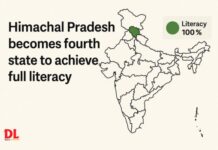


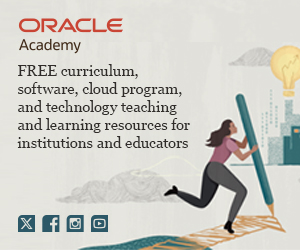





 A tête-à-tête with aspirants on ‘Why MBA’ often draws out some of the most diverse answers. In recent times, not only has the B-schools witnessed a dip in placement figures; reports also suggest a nearly 10 percent dip in takers of CAT 2013. Why has MBA, the much celebrated passport to lucrative careers, lost its lustre suddenly? Anushi Agrawal, with inputs from Veena Kurup of Elets News Network (ENN) finds out if placement is the only factor that attracts students to do an MBA.
A tête-à-tête with aspirants on ‘Why MBA’ often draws out some of the most diverse answers. In recent times, not only has the B-schools witnessed a dip in placement figures; reports also suggest a nearly 10 percent dip in takers of CAT 2013. Why has MBA, the much celebrated passport to lucrative careers, lost its lustre suddenly? Anushi Agrawal, with inputs from Veena Kurup of Elets News Network (ENN) finds out if placement is the only factor that attracts students to do an MBA.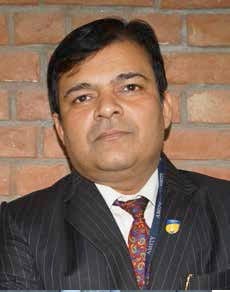




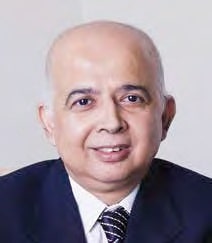 Dr Debashis Sanyal, Dean,School of Business Management, NMIMS
Dr Debashis Sanyal, Dean,School of Business Management, NMIMS



 Language Lab says, “Ambient Insight Premium Report (2012) says that the global market for digital English language learning products and services reached $1.31 billion in 2011. The worldwide five-year compound annual growth rate (CAGR) is 14.5percent and revenues will reach $2.58 billion by 2016.” The situation is equally bright in India. Gagan Goyal, Founder and CEO, ThinkLabs says, “It is a growing market. `100 crore revenue can be expected from each product in next couple of years. Smart classes is now an old story, labs are the latest phenomenon. The products which are closer to the curriculum are very much in demand as compared to the products which are just value addition.” Moreover, “the report by a recent technology market research suggests that about 5 percent of the $40 billion IT market in India, including hardware, software and IT services, was in the education sector. The market is expected to grow at nearly 12 percent through 2017,” shares Anil Goyal, Director, Mexus Education Pvt Ltd. But this growth in the sector has to be supported by good infrastructure in terms of good labs in the schools and high-quality internet connectivity. “The fundamental infrastructure required is just computers, internet and awareness about IT tools. Boom of internet in the country has led to a boom in this sector. The official rate of growth is around 8-10 percent but this is a very conservative scenario. The industry has immense scope and on ground, the rate of growth is much higher. But the growth depends on overall development of infrastructure and content,” says Prof essor Kamal Bijlani, Director, Amrita ELearning Research Lab. The IT solutions required in schools and colleges are very different.
Language Lab says, “Ambient Insight Premium Report (2012) says that the global market for digital English language learning products and services reached $1.31 billion in 2011. The worldwide five-year compound annual growth rate (CAGR) is 14.5percent and revenues will reach $2.58 billion by 2016.” The situation is equally bright in India. Gagan Goyal, Founder and CEO, ThinkLabs says, “It is a growing market. `100 crore revenue can be expected from each product in next couple of years. Smart classes is now an old story, labs are the latest phenomenon. The products which are closer to the curriculum are very much in demand as compared to the products which are just value addition.” Moreover, “the report by a recent technology market research suggests that about 5 percent of the $40 billion IT market in India, including hardware, software and IT services, was in the education sector. The market is expected to grow at nearly 12 percent through 2017,” shares Anil Goyal, Director, Mexus Education Pvt Ltd. But this growth in the sector has to be supported by good infrastructure in terms of good labs in the schools and high-quality internet connectivity. “The fundamental infrastructure required is just computers, internet and awareness about IT tools. Boom of internet in the country has led to a boom in this sector. The official rate of growth is around 8-10 percent but this is a very conservative scenario. The industry has immense scope and on ground, the rate of growth is much higher. But the growth depends on overall development of infrastructure and content,” says Prof essor Kamal Bijlani, Director, Amrita ELearning Research Lab. The IT solutions required in schools and colleges are very different.




 Sameer Bora, EVP Research and Development, Next Education
Sameer Bora, EVP Research and Development, Next Education
 Dr Haresh Tank, Director, Station-e Language Lab
Dr Haresh Tank, Director, Station-e Language Lab Anil Goyal,Director, Mexus Education Pvt LtdGovernment spending on ICT has increased by 53.2 per cent to `340 crore in the 2013-14 Union Budget. It is expected to grow five times by 2020 due to the current low level of penetration in government schools
Anil Goyal,Director, Mexus Education Pvt LtdGovernment spending on ICT has increased by 53.2 per cent to `340 crore in the 2013-14 Union Budget. It is expected to grow five times by 2020 due to the current low level of penetration in government schools

 be really smart about our pricing here. Globally our prices are at least three to four times what we usually charge in India. We had to do this to survive in the market here,” shares Vivek Gupta. Most of the technology solution providers find that bureaucracy, time taken in decision-making and hierarchy in the oganisations hinder the progress in the industry. Private schools and colleges are more receptive to IT initiatives, while government schools and institutes delay decision-making. “Most of the people who are running the in Vivek Gupta. Most of the technology solution providers find that bureaucracy, time taken in decision-making and hierarchy in the oganisations hinder the progress in the industry. Private schools and colleges are more receptive to IT initiatives, while government schools and institutes delay decision-making. “Most of the people who are running the in-stitutes are of traditional mindset. They are not from academia. They are not aware of new teaching pedagogy, how it help in teaching-learning process, how it help in retention level. The challenge is to educate people about why these initiatives are important,” says Gagan Goyal.
be really smart about our pricing here. Globally our prices are at least three to four times what we usually charge in India. We had to do this to survive in the market here,” shares Vivek Gupta. Most of the technology solution providers find that bureaucracy, time taken in decision-making and hierarchy in the oganisations hinder the progress in the industry. Private schools and colleges are more receptive to IT initiatives, while government schools and institutes delay decision-making. “Most of the people who are running the in Vivek Gupta. Most of the technology solution providers find that bureaucracy, time taken in decision-making and hierarchy in the oganisations hinder the progress in the industry. Private schools and colleges are more receptive to IT initiatives, while government schools and institutes delay decision-making. “Most of the people who are running the in-stitutes are of traditional mindset. They are not from academia. They are not aware of new teaching pedagogy, how it help in teaching-learning process, how it help in retention level. The challenge is to educate people about why these initiatives are important,” says Gagan Goyal.
 Sudha Singh, Principal, Ryan International School, Greater Noida
Sudha Singh, Principal, Ryan International School, Greater Noida

 This is a unique and interesting career option for those who wish to undertake a business venture—being one’s own boss. This course grooms students to identify needs, develop vision, take action and work accordingly. To add into it Professor Satya Ranjan Acharya, faculty, PGDM-Business Entrepreneurship, Entrepreneurship Development Institute, Ahmedabad says, “This programme is structured to help students who look forward to managing their family business and create a new enterprise or want to work as an entrepreneurial manager.”
This is a unique and interesting career option for those who wish to undertake a business venture—being one’s own boss. This course grooms students to identify needs, develop vision, take action and work accordingly. To add into it Professor Satya Ranjan Acharya, faculty, PGDM-Business Entrepreneurship, Entrepreneurship Development Institute, Ahmedabad says, “This programme is structured to help students who look forward to managing their family business and create a new enterprise or want to work as an entrepreneurial manager.” This course helps students to get into management positions. It moulds the students to build basic strategy concept which they can implement in both business and corporate levels. It enhances the skill of the students to take important business decisions.
This course helps students to get into management positions. It moulds the students to build basic strategy concept which they can implement in both business and corporate levels. It enhances the skill of the students to take important business decisions. Operation management is a field of specialisation which deals with converting the raw materials into final products. This specialisation field demands persons with techno-managerial skills who can implement the strategies, design and control the process of the conversion.
Operation management is a field of specialisation which deals with converting the raw materials into final products. This specialisation field demands persons with techno-managerial skills who can implement the strategies, design and control the process of the conversion. This management course is concerned with the making and management of clothes and apparels. With the rise in the area of Fashion Design and Management, this course aims to create professionals willing to create and interpret knowledge of materials to better serve the industry. This course grooms students for the apparel manufacturing industry by technically training them to manage large manufacturing facilities. This is a profession which demands creative, sensitive and scientific innovations and social awareness.
This management course is concerned with the making and management of clothes and apparels. With the rise in the area of Fashion Design and Management, this course aims to create professionals willing to create and interpret knowledge of materials to better serve the industry. This course grooms students for the apparel manufacturing industry by technically training them to manage large manufacturing facilities. This is a profession which demands creative, sensitive and scientific innovations and social awareness. This programme is designed in a way to equip students to work efficiently in different aspects of banking and finance with appropriate managerial skills. Specialisation in Banking and Finance gives knowledge around the money and strategic management of banks. Students may gain sensible insight in international money services that incorporate a direct impact on the banking track. Amit Srivastav, Vice President, Indian Institute of Financial Planning, New Delhi says, “Specialised professionals in Banking and Finance are considered as most effective and recession proof and often the best package earners amongst all specialisations”.
This programme is designed in a way to equip students to work efficiently in different aspects of banking and finance with appropriate managerial skills. Specialisation in Banking and Finance gives knowledge around the money and strategic management of banks. Students may gain sensible insight in international money services that incorporate a direct impact on the banking track. Amit Srivastav, Vice President, Indian Institute of Financial Planning, New Delhi says, “Specialised professionals in Banking and Finance are considered as most effective and recession proof and often the best package earners amongst all specialisations”.
 Monica Malhotra Kandhari, Senior Director, MBD Group talks about joining a consortium with technology companies to deliver content
Monica Malhotra Kandhari, Senior Director, MBD Group talks about joining a consortium with technology companies to deliver content
 Chitra Ravi, Founder & CEO, EZ Vidya was conducting a training programme for CBSE School Principals. Unique to her style, she asked the participants to list the safety measures the leaders have taken in their respective schools. Fire extinguishers, SMS to parents, disaster team were few of the responses. Chitra then posed a question, “Have you ever considered the emotional safety of the child in the classroom?” and the principals drew a blank.
Chitra Ravi, Founder & CEO, EZ Vidya was conducting a training programme for CBSE School Principals. Unique to her style, she asked the participants to list the safety measures the leaders have taken in their respective schools. Fire extinguishers, SMS to parents, disaster team were few of the responses. Chitra then posed a question, “Have you ever considered the emotional safety of the child in the classroom?” and the principals drew a blank.
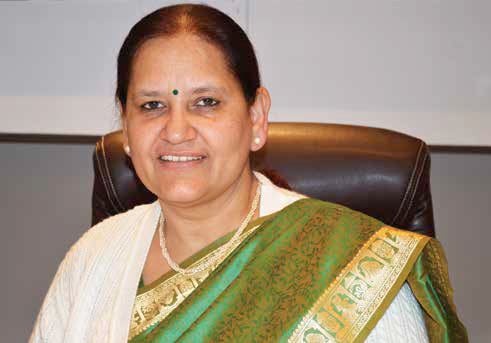 “In order to ensure teacher availability in backward district of Mewat, a separate teacher cadre has been created . Teachers recruited for Mewat will not be transferable to other parts of Haryana,” says Surina Rajan. In conversation with Ankush Kumar of Elets News Network (ENN)
“In order to ensure teacher availability in backward district of Mewat, a separate teacher cadre has been created . Teachers recruited for Mewat will not be transferable to other parts of Haryana,” says Surina Rajan. In conversation with Ankush Kumar of Elets News Network (ENN)









